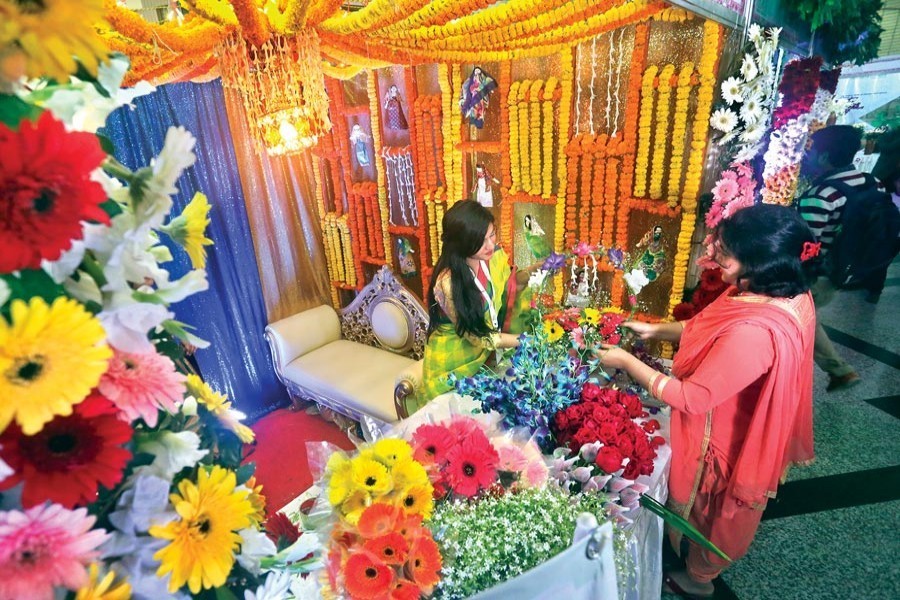That the demand for celebratory flowers continues to rise by the year could be seen during some special annual occasions. Apart from the religious festivals, they generate high demand during a lot of city-based public celebrations. This year was no exception. Given the great rush of buyers thronging roadside flower vendors on the 1st day of the Bangla month of Falgoon and the Valentine's Day, both falling in February, the passion for flowers has made its presence felt in its usual spectacular way. Flowers have become integral to the Bangla spring festival observed in Falgoon. The following 'Day of Love' on the February 14th adds to the ethereal spell flowers cast on the people engaged in festivities. This is no overstatement to say that it is the floral charm which has lately tied Bangladesh to the rest of the world.
The country is fast picking a means of universal fraternity through flowers. It largely goes unidentified, so does the spiritual-aesthetic link between a flower grower in a garden in Holland and one in Bangladesh who cultivates high-on-demand flowers in an obscure village. But the stark reality that pops up distressingly is the dissimilarity between them. The gardener in Holland gets what he deserves, from economic benefits to social status. The flower-growers in Bangladesh, instead, have to go a long way before they find their place in the nation's formal economy. But the fledgling flower sector is seemingly poised to be headed for a bright future. It is largely hinged on the latent love for flowers which has for some time been bubbling in the country's youths. The hindrances to the expanding flower business are similar to the others seen in new trading ventures in the country. However, the sector has impressively graduated from the amateurish cultivation, with the serious farmers eying continued expansion of their precincts. It happened both in terms of flower variety and cultivated lands. Three decades ago, the flower crop comprised chiefly tuberoses, marigold, jasmine, traditional roses and some other indigenous types.
With time passing by and the urban demand on sharp rise, commercially grown flowers carved a significant place in the country's agriculture. Concomitantly, the cultivation area of flowers found itself extended from Jhikargachha in Jessore to many outlying districts. Those included Savar, Gazipur, Narsingdi to Satkhira and some others in the south-western region. Flowers are said to be grown on around 12 thousand acres of land in the country. Nearly 2.0 million people are involved directly or indirectly in flower cultivation and business. But the sector is beset with a lot of drawbacks. It still lacks formal and permanent wholesale markets. The urban retailers run their business at makeshift sheds. Yet there is upbeat news.
One of the most significant developments in commercial flower farming lately is the growers' successful growth of gerbera, a highly admired foreign flower. Bouquets of assorted cut flowers and foliage dominated by gerberas offer an extraordinary spectacle at Dhaka's flower outlets. Large and vibrant-red roses have lately added to the majesty of the city's flower markets. Local florists now mull growing newer-type alien flowers in the country. According to many, the country's flower sector has export prospects. But the domestic market is small, with a yearly mobilisation of around US$ 23.5 million. Venturesome entrepreneurs find even in this figure the seeds of high export potential. For it to materialise, the traders need strong policy support and guidelines which are awfully missing at present.


